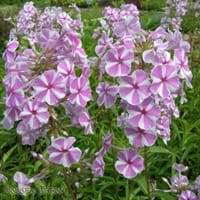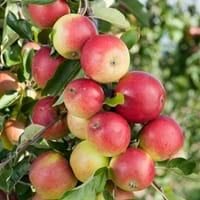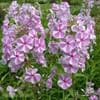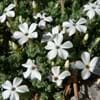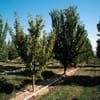Life Span
Perennial
Perennial
Type
Flowering Plants
Fruit
Origin
California, Northwestern United States, United States
Hybrid origin, Eastern Europe, Southern Europe, Russia/Siberia, Southern Asia, Western Asia
Types
Blue Moon, Clouds of Perfume
Not avaialable
Number of Varieties
Not Available
Habitat
Rich Woods
Hillside, Mountain Slopes, Temperate Regions
USDA Hardiness Zone
4-8
5-8
Sunset Zone
1a, 1b, 2a, 2b, 3a, 3b, 4, 5, 6, 7, 8, 9, 10, 11, 12, 13, 14, 15, 16, 17
A1, A2, A3, 8, 9, 10, 11, 12, 13, 14, 15, 16, 17, 18, 19, 20, 21, 22, 23, 24
Habit
Mat-forming
Oval or Rounded
Flower Color
Light Purple, Pink, Purple, Reddish Plum, White
White
Flower Color Modifier
Bicolor
Bicolor
Fruit Color
Not Available
Red, Yellow green
Leaf Color in Spring
Green
Green
Leaf Color in Summer
Green
Green
Leaf Color in Fall
Green
Green, Light Yellow, Brown
Leaf Color in Winter
Not Available
Light Green
Leaf Shape
Ovate-lanceolate
Oblong
Plant Season
Spring
Spring, Fall
Sunlight
Partial Sun, Partial shade
Full Sun, Partial Sun, Partial shade
Type of Soil
Loam
Clay, Loam, Sand
The pH of Soil
Neutral
Acidic, Neutral
Soil Drainage
Well drained
Well drained
Bloom Time
Spring
Spring, Late Spring
Tolerances
Not Available
Drought
Where to Plant?
Container
Ground
How to Plant?
Cuttings, Seedlings
Grafting, Seedlings, Transplanting
Plant Maintenance
Medium
Medium
Watering Requirements
Requires regular watering
Medium
In Summer
Lots of watering
Lots of watering
In Spring
Moderate
Moderate
In Winter
Average Water
Average Water
Soil pH
Neutral
Acidic, Neutral
Soil Type
Loam
Clay, Loam, Sand
Soil Drainage Capacity
Well drained
Well drained
Sun Exposure
Partial Sun, Partial shade
Full Sun, Partial Sun, Partial shade
Pruning
Remove dead flowers
Remove damaged leaves, Remove dead branches, Remove dead leaves
Fertilizers
Apply 10-10-10 amount
All-Purpose Liquid Fertilizer
Pests and Diseases
Leaf spot, Powdery mildew, Rust
Red blotch
Plant Tolerance
Drought
Drought
Flower Petal Number
Single
Single
Foliage Texture
Medium
Medium
Foliage Sheen
Matte
Matte
Attracts
Hummingbirds, Butterflies
Birds
Allergy
Mild Allergen
Mouth itching, Throat itching
Aesthetic Uses
Ground Cover
Not Used For Aesthetic Purpose
Beauty Benefits
Not Available
Not Available
Environmental Uses
Air purification
Air purification
Medicinal Uses
Boils, Eczema, Intestinal disorders
Cancer, constipation, Diabetes, Diarrhea, Dysentry, Fever, Heart problems, Tooth ache
Part of Plant Used
Flowers, Leaves, Root
Fruits
Other Uses
As a tea substitute, Used as eyewash
Used As Food, Wood is used for making furniture
Used As Indoor Plant
No
No
Used As Outdoor Plant
Yes
Yes
Garden Design
Mixed Border, Rock Garden / Wall, Wildflower
Edible, Feature Plant, Fruit / Fruit Tree, Topiary / Bonsai / Espalier
Botanical Name
Phlox amplifolia
Malus domestica
Common Name
Phlox amplifolia
Apple, Cooking Apple, Crimson King Apple, Red Cider Apple, Red Eating Apple
In Hindi
Phlox amplifolia
Cider Apple
In German
Phlox amplifolia
Cider Apple
In French
Phlox amplifolia
Cider Apple
In Spanish
Phlox amplifolia
sidra de manzana
In Greek
Phlox amplifolia
Cider Apple
In Portuguese
Phlox amplifolia
sidra de maçã
In Polish
Phlox amplifolia
Cider Apple
In Latin
Phlox amplifolia
Pupillam cisere
Phylum
Magnoliophyta
Magnoliophyta
Class
Magnoliopsida
Magnoliopsida
Family
Polemoniaceae
Rosaceae
Clade
Angiosperms, Asterids, Eudicots
Angiosperms, Eudicots, Rosids
Tribe
Phlocideae
Not Available
Subfamily
Polemonioideae
Not Available
Number of Species
Not Available
Season and Care of Phlox amplifolia and Cider Apple
Season and care of Phlox amplifolia and Cider Apple is important to know. While considering everything about Phlox amplifolia and Cider Apple Care, growing season is an essential factor. Phlox amplifolia season is Spring and Cider Apple season is Spring. The type of soil for Phlox amplifolia is Loam and for Cider Apple is Clay, Loam, Sand while the PH of soil for Phlox amplifolia is Neutral and for Cider Apple is Acidic, Neutral.
Phlox amplifolia and Cider Apple Physical Information
Phlox amplifolia and Cider Apple physical information is very important for comparison. Phlox amplifolia height is 30.50 cm and width 30.50 cm whereas Cider Apple height is 370.00 cm and width 460.00 cm. The color specification of Phlox amplifolia and Cider Apple are as follows:
Phlox amplifolia flower color: Light Purple, Pink, Purple, Reddish Plum and White
Phlox amplifolia leaf color: Green
Cider Apple flower color: White
- Cider Apple leaf color: Green
Care of Phlox amplifolia and Cider Apple
Care of Phlox amplifolia and Cider Apple include pruning, fertilizers, watering etc. Phlox amplifolia pruning is done Remove dead flowers and Cider Apple pruning is done Remove damaged leaves, Remove dead branches and Remove dead leaves. In summer Phlox amplifolia needs Lots of watering and in winter, it needs Average Water. Whereas, in summer Cider Apple needs Lots of watering and in winter, it needs Average Water.
